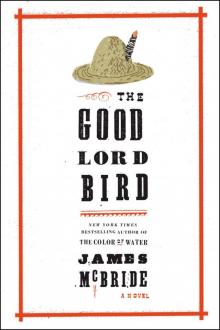A Place in the Country


Author: W. G. Sebald
Category: Memoir
Published: 1998
Series:
View: 234
Read OnlineA Place in the Country is W. G. Sebald’s meditation on the six artists and writers who shaped his creative mind—and the last of this great writer’s major works to be translated into English.
This edition includes more than 40 pieces of art, all originally selected by W. G. Sebald.
This extraordinary collection of interlinked essays about place, memory, and creativity captures the inner worlds of five authors and one painter. In his masterly and mysterious style—part critical essay, part memoir—Sebald weaves their lives and art with his own migrations and rise in the literary world.
Here are people gifted with talent and courage yet in some cases cursed by fragile and unstable natures, working in countries inhospitable or even hostile to them. Jean-Jacques Rousseau is conjured on the verge of physical and mental exhaustion, hiding from his detractors on the island of St. Pierre, where two centuries later Sebald took rooms adjacent to his. Eighteenth-century author Johann Peter Hebel is remembered for his exquisite and delicate nature writing, expressing the eternal balance of both the outside world and human emotions. Writer Gottfried Keller, best known for his 1850 novel Green Henry, is praised for his prescient insights into a Germany where “the gap between self-interest and the common good was growing ever wider.”
Sebald compassionately re-creates the ordeals of Eduard Mörike, the nineteenth-century German poet beset by mood swings, depression, and fainting spells in an increasingly shallow society, and Robert Walser, the institutionalized author whose nearly indecipherable scrawls seemed an attempt to “duck down below the level of language and obliterate himself” (and whose physical appearance and year of death mirrored those of Sebald’s grandfather). Finally, Sebald spies a cognizance of death’s inevitability in painter Jan Peter Tripp’s lovingly exact reproductions of life.
Featuring the same kinds of suggestive and unexplained illustrations that appear in his masterworks Austerlitz and The Rings of Saturn, and translated by Sebald’s colleague Jo Catling, A Place in the Country is Sebald’s unforgettable self-portrait as seen through the experiences of others, a glimpse of his own ghosts alongside those of the men who influenced him. It is an essential addition to his stunning body of work.
Praise for A Place in the Country
*
“Measured, solemn, sardonic . . . hypnotic . . . [W. G. Sebald’s] books, which he made out of classics, remain classics for now.”—Joshua Cohen, The New York Times Book Review***
“In Sebald’s writing, everything is connected, everything webbed together by the unseen threads of history, or chance, or fate, or death. The scholarly craft of gathering scattered sources and weaving them into a coherent whole is transformed here into something beautiful and unsettling, elevated into an art of the uncanny—an art that was, in the end, Sebald’s strange and inscrutable gift.”—Slate
“Magnificent . . . The multiple layers surrounding each essay are seamless to the point of imperceptibility.”—New York Daily News
“Sebald’s most tender and jovial book.” —The Nation **
“Reading [A Place in the Country is] like going for a walk with a beautifully talented, deeply passionate novelist from Mars.”—*New York*
From the Trade Paperback edition.
This edition includes more than 40 pieces of art, all originally selected by W. G. Sebald.
This extraordinary collection of interlinked essays about place, memory, and creativity captures the inner worlds of five authors and one painter. In his masterly and mysterious style—part critical essay, part memoir—Sebald weaves their lives and art with his own migrations and rise in the literary world.
Here are people gifted with talent and courage yet in some cases cursed by fragile and unstable natures, working in countries inhospitable or even hostile to them. Jean-Jacques Rousseau is conjured on the verge of physical and mental exhaustion, hiding from his detractors on the island of St. Pierre, where two centuries later Sebald took rooms adjacent to his. Eighteenth-century author Johann Peter Hebel is remembered for his exquisite and delicate nature writing, expressing the eternal balance of both the outside world and human emotions. Writer Gottfried Keller, best known for his 1850 novel Green Henry, is praised for his prescient insights into a Germany where “the gap between self-interest and the common good was growing ever wider.”
Sebald compassionately re-creates the ordeals of Eduard Mörike, the nineteenth-century German poet beset by mood swings, depression, and fainting spells in an increasingly shallow society, and Robert Walser, the institutionalized author whose nearly indecipherable scrawls seemed an attempt to “duck down below the level of language and obliterate himself” (and whose physical appearance and year of death mirrored those of Sebald’s grandfather). Finally, Sebald spies a cognizance of death’s inevitability in painter Jan Peter Tripp’s lovingly exact reproductions of life.
Featuring the same kinds of suggestive and unexplained illustrations that appear in his masterworks Austerlitz and The Rings of Saturn, and translated by Sebald’s colleague Jo Catling, A Place in the Country is Sebald’s unforgettable self-portrait as seen through the experiences of others, a glimpse of his own ghosts alongside those of the men who influenced him. It is an essential addition to his stunning body of work.
Praise for A Place in the Country
*
“Measured, solemn, sardonic . . . hypnotic . . . [W. G. Sebald’s] books, which he made out of classics, remain classics for now.”—Joshua Cohen, The New York Times Book Review***
“In Sebald’s writing, everything is connected, everything webbed together by the unseen threads of history, or chance, or fate, or death. The scholarly craft of gathering scattered sources and weaving them into a coherent whole is transformed here into something beautiful and unsettling, elevated into an art of the uncanny—an art that was, in the end, Sebald’s strange and inscrutable gift.”—Slate
“Magnificent . . . The multiple layers surrounding each essay are seamless to the point of imperceptibility.”—New York Daily News
“Sebald’s most tender and jovial book.” —The Nation **
“Reading [A Place in the Country is] like going for a walk with a beautifully talented, deeply passionate novelist from Mars.”—*New York*
From the Trade Paperback edition.
 How to Be a Man
How to Be a Man Vertigo
Vertigo I Love a Broad Margin to My Life
I Love a Broad Margin to My Life Pyramid 76
Pyramid 76 Look Me in the Eye: My Life with Asperger's
Look Me in the Eye: My Life with Asperger's The Good Lord Bird
The Good Lord Bird Sky Burial: An Epic Love Story of Tibet
Sky Burial: An Epic Love Story of Tibet Shadows Of The Workhouse: The Drama Of Life In Postwar London
Shadows Of The Workhouse: The Drama Of Life In Postwar London